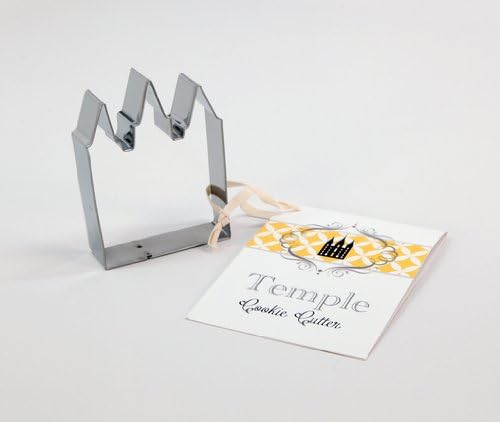Donna’s recent post about a new temple nestled amidst casinos left me thinking about Russell M. Nelson’s temple-building spree. According to the Salt Lake Tribune, some 350 temples are planned, operational, or under development as of April’s General Conference, with roughly half announced since Nelson became president of the Church in 2018.
Having a temple nearby will mean that many more Mormon couples will be able to take travel funds previously necessary for a temple wedding and put them toward a honeymoon. But, already, some temples in the Beehive State are less than three miles apart. From 2017 to 2024, the number of Church members grew just under 7%. The number of announced or operating temples grew just over 92%.
Some temples are reportedly having erratic and shortened hours because there are too few volunteers and senior missionaries to staff them. As the image from Donna’s post suggests, an abundance of quantity could cheapen the quality. I remember my own youthful experience. After car washes and other fund raisers to make the 700-mile pilgrimage to the Washington DC temple, I was delighted when one opened in Atlanta, less than 200 miles away from my home. In DC, I felt the presence of my pioneer ancestors; we stepped into a round baptismal font supported by statues of the animals that pulled wagons to the promised land. In Atlanta, we entered a drab baptismal tank with a little frieze of oxen on the back wall like an afterthought, not even a shadow of what I’d expected. At the time, I rebuked myself for being spiritually underwhelmed. Now I think Gordon B. Hinckley traded awe and effort to hit higher numbers.
Nelson is also making trade-offs. For a church that has always counseled against causing division, Salt Lake’s building spree seems to be sowing it. An article this May suggests the approach is to push communities to adopt the plans the Church presents, not adapt plans to individual communities’ wants.
Consider the situation in Fairview, Texas, a small town with the motto “keeping it country,” which includes limiting building heights to 35 feet. Despite the fact that other temples, such as the one in Mesa, Arizona, lack spires, the proposed plans for Fairview include one that would soar to 173 feet tall. Faced with construction codes, the Church did not engage in local discussions but rather urged local members to write town managers to push the project as-is. (Does this remind anyone of the top-down campaigning around California’s Proposition 8 to limit marriage to heterosexual couples?)
“The church had an opportunity to come to the community and ask for input,” resident Karly Green told the Salt Lake Tribune, “or find an area that would already accept the plan they had in place without having to fight for exemptions. Instead, Salt Lake headquarters has come with a plan that requires exemptions and is preemptively asking members to be on the offensive.” Concerns for other temple projects regarding lighting and crowding have met with similar responses. Nor, apparently, does Church headquarters feel any need to explain itself; it did not respond to the newspaper’s questions about how it would react to local opposition to temple projects or gain support for them. The unspoken message? It is for members and communities to conform, not for the First Presidency to communicate.
Underscoring the conformity theme is an embrace of modular temple components. Peggy Fletcher Stack described how a new temple in Helena, Montana was “constructed in dozens of pieces in Alabama and then shrink-wrapped and transported by semi-truck.” Endowments may not be for the masses but they can be mass-produced. As I’ve reflected before, sealing rooms are all the same. That makes sense for a Church that seems to want all people to be the same too.
Image: Doodle Beads


Thanks for this post, Monya! The proposed site of the LDS temple on Stacy Rd. in Fairview is 20.5 miles from the Dallas Temple on Willow Rd. in Dallas. Just north of Plano, Fairview is an easy drive down Central Expressway into Dallas. (Traffic can get thick during rush hour.) Also, the overwhelmingly white population boasts a median income of $103,000, suggesting the 20 mile journey to the Dallas Temple is probably not a hardship for most local members. In fact, I wouldn’t be surprised if many of the local LDS continue to frequent the Dallas Temple, particularly for weddings, since it’s a more prestigious facility and they can afford the trip.
Why the LDS Church would bankroll such a project is beyond me. Particularly when it invites controversy and criticism.
It’s hard to see what the reasoning is for making smaller, cheaper temples right near existing temples that aren’t operating at full capacity. The commenters on the Wheat & Tares post you linked above have some interesting speculations about it though.
I was sealed to my parents in the Mesa temple at the age of 10 and don’t remember much except that it was a beautiful building. I went to DC for my endowments. A magical building. And then to Salt Lake just before my mission. And then…Provo. Things went downhill from there. After my mission, I went to the Atlanta temple and was underwhelmed, then to Dallas (these two still the closest to New Orleans, where I lived). When a temple was finally opened in Baton Rouge, I was no longer a member and felt no sense of loss at no longer being able to see the “beauty” of the temple. Architecture wasn’t the only issue, of course, but beauty is important, too. I haven’t been following the renovations at the Salt Lake temple closely. Are they removing some of the features on the outside of the building?
It is true. The McTemples cheapen the experience. It was special to travel to Switzerland to go to the temple. Youth groups stayed five days to make the trip and expense worthwhile.
We stayed in Swiss bunkers designed for nuclear war. After a baptismal session in the morning, we would go hiking or sightseeing, and enjoyed Swiss consumer items. Especially popular were a bitter soft drink and a non-alcoholic champagne.
Most importantly, we saw other Mormons of our age, which was special, since you would only meet each other once or twice a week at home. Temple trips were actually a second youth conference, including firesides in the evenings.
Lots of fun, lots of time for thought and conversation. It was great when the Frankfurt temple was announced, and we could save money and effort and go to the temple more frequently, but we lost the second youth conference.
The cynic in me suspects that the temple inflation occurs because some statistician told the brethren that new temples increase tithing collections. Another motive, in the eyes of a cynic, might be real estate speculation. Supposedly, temple construction induces the development of retirement communities because Mormon seniors like to attend the temple at least weekly.
No idea, if that is true but the hypotheses could be tested.
Hellmut — That would be interesting if it is influenced by real estate speculation around retirement communities. That would explain why they keep building new tiny ones in the Mormon belt, which is already saturated with temples. Again, it seems like it would be a sad, cheapened experience to go to the local strip-mall-temple if you’re within a reasonable distance of one of the beautiful old historic temples.
I also nominate Rebecca Bibliotecha for her outstanding updates on the Fairview Temple!